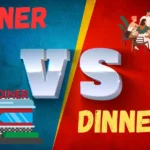When it comes to using comparative adjectives in English, clarity and correctness are crucial. One common question that arises is whether it is acceptable to say “more easy” instead of “easier.”
This blog post will explore the correct usage of comparative adjectives, debunk myths, and provide practical insights to enhance your understanding and application of these important grammatical structures.
The Basics of Comparative Adjectives
Comparative adjectives are used to compare differences between two nouns. These adjectives help us express how one thing is different from another in terms of degree or quality. Understanding how to form and use comparatives correctly can significantly improve both written and spoken English.
Definition and Formation
Comparative adjectives are formed to compare two items, and they generally involve either:
- Adding “-er” to the end of the adjective (e.g., “taller,” “smarter”).
- Using “more” before the adjective for longer adjectives (e.g., “more beautiful,” “more interesting”).
Examples:
- Taller: He is taller than his brother.
- More beautiful: This painting is more beautiful than the other one.
Rules for Forming Comparatives
- One-syllable adjectives: Add “-er”.
- Big → Bigger
- Fast → Faster
- Two-syllable adjectives ending in “-y”: Change “-y” to “-ier”.
- Happy → Happier
- Easy → Easier
- Adjectives with more than two syllables: Use “more” before the adjective.
- Beautiful → More beautiful
- Interesting → More interesting
Exploring the Phrase “More Easy”
The phrase “more easy” might sound reasonable to some, but it is grammatically incorrect according to standard English rules. The correct comparative form of the adjective “easy” is “easier.”
Grammatical Analysis
The adjective “easy” is a two-syllable word that ends in “y.” For comparatives of such adjectives, the standard rule is to replace the “y” with “ier,” resulting in “easier.”
Example Sentences:
- Incorrect: This task is more easy than that one.
- Correct: This task is easier than that one.
Understanding “Easier” vs. “More Easy”
The distinction between “easier” and “more easy” is crucial for clear and correct communication.
Why “Easier” is Preferred
- Grammatical Rules:
- “Easier” follows the rule for two-syllable adjectives ending in “y.”
- “More easy” is redundant and awkward in English.
- Linguistic Tradition:
- Historical usage patterns and linguistic evolution favor “easier” over “more easy.”
- Practical Usage:
- “Easier” is concise and fits naturally into sentences, whereas “more easy” disrupts the flow.
Examples
- Easier: Solving this puzzle is easier than solving that one.
- More Easy: This sentence is more easy to understand (Incorrect).
Common Misconceptions About Comparative Adjectives
Several misconceptions about comparative adjectives lead to incorrect usage. Let’s clear up a few:
Misconception 1: “More Easy” is Acceptable
- Fact: According to standard grammatical rules, “easier” is the correct comparative form of “easy.”
Misconception 2: Comparative Adjectives are Optional
- Fact: Using the correct comparative form is essential for clarity and accuracy in communication.
Misconception 3: All Adjectives Follow the Same Rules
- Fact: The rules for forming comparatives vary based on the number of syllables and the ending of the adjective.
The Influence of Non-Native Speakers on English Comparatives
Non-native speakers often face challenges with comparative adjectives due to differences in their native languages.
Common Errors
- Literal Translation: Translating directly from a native language can lead to mistakes such as “more easy.”
- Overgeneralization: Applying rules from their language to English comparatives.
Examples
- Spanish Speakers: Might say “más fácil” which translates directly to “more easy.”
- French Speakers: Might use structures similar to “plus facile.”
Tips for Non-Native Speakers
- Learn the Rules: Familiarize yourself with English rules for comparatives.
- Practice: Use comparatives in context to reinforce correct usage.
- Seek Feedback: Get corrections from native speakers or language instructors.
“Easier” and “More Easily”: Understanding the Difference
It’s important to distinguish between the comparative adjective “easier” and the comparative adverb “more easily.”
Adjective vs. Adverb
- “Easier”: Used to compare the difficulty of tasks or qualities.
- Example: This problem is easier to solve.
- “More Easily”: Used to compare how actions are performed.
- Example: This problem can be solved more easily with the right tools.
Practical Application
Easier: This approach is easier than the previous one. More Easily: You can complete the task more easily with this method.
Alternatives to “More Easy”: Enhancing Your Vocabulary
Expanding your vocabulary can provide more nuanced ways to express comparisons. Here are some alternatives:
Comparative Adjectives
- Simpler: This solution is simpler.
- Less Complex: This approach is less complex.
Contextual Examples
- Simpler: The new software is simpler to use.
- Less Complex: The procedure is less complex than it used to be.
Tips for Vocabulary Enhancement
- Read Widely: Exposure to various texts can introduce you to new adjectives.
- Use a Thesaurus: Find synonyms and alternatives for common adjectives.
- Practice: Incorporate new words into your writing and speaking.
Choosing the Right Adjectives for Effective Communication
Effective communication often relies on selecting the most appropriate adjectives to convey your message clearly.
Guidelines
- Be Specific: Use adjectives that precisely describe the difference.
- Consider the Context: Choose adjectives based on the situation and audience.
Examples
- Specific: The new policy is more beneficial than the previous one.
- Contextual: In a formal report, use “more efficient” rather than “easier.”
Applying the Rules: Examples of Comparative and Superlative Adjectives
Understanding how to apply the rules for comparatives and superlatives can help you avoid common mistakes.
Comparative Adjectives
- Smarter: She is smarter than her colleague.
- More Responsible: He is more responsible than his brother.
Superlative Adjectives
- Smartest: She is the smartest student in the class.
- Most Responsible: He is the most responsible person in the group.
Practice Exercises
- Rewrite Sentences: Change sentences using “more easy” to the correct form.
- Create Sentences: Form new sentences using comparatives and superlatives.
The Evolution of English: Comparative Adjectives in Flux
Language evolves over time, and so do the rules for comparative adjectives.
Historical Perspective
- Old English: Comparative forms were different from modern usage.
- Modern English: Rules have standardized, but some variation persists.
Trends and Shifts
- Recent Changes: Language changes influence how comparatives are used.
- Influence of Media: Modern media can affect language trends.
Practical Applications of Comparative Adjectives in Daily Use
Using comparative adjectives correctly in everyday situations ensures effective communication.
Real-Life Scenarios
- In Business: Comparing products or services.
- Example: Our product is more efficient than the competition’s.
- In Education: Describing academic performance.
- Example: Her essay is more comprehensive than his.
Tips for Daily Use
- Practice Regularly: Incorporate comparatives into your daily conversations.
- Be Aware: Watch for common mistakes and correct them promptly.
- Seek Feedback: Ask others to review your usage of comparatives.
Conclusion
Understanding and using comparative adjectives correctly is essential for clear and effective communication. While “more easy” may seem intuitive, the correct form is “easier.”
By familiarizing yourself with the rules and practicing their application, you can enhance both your written and spoken English. Keep these insights in mind, and you’ll be well on your way to mastering comparatives in English.
Feel free to apply these rules and tips to improve your grammatical accuracy and communication skills.

Sophie Mitchell, a seasoned English educator, brings her passion for language and years of teaching expertise to TalkSpeaker. With a knack for simplifying grammar and expanding vocabulary, she empowers learners to master English with confidence.




